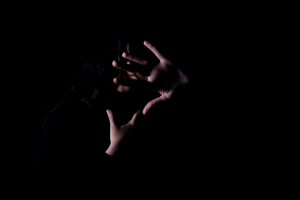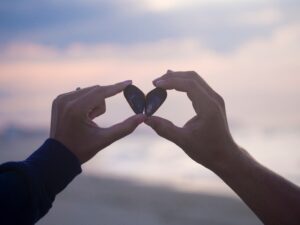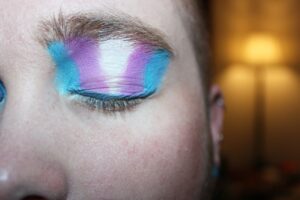Anyone Can Take Beautiful Pictures.
Most of us have a powerful camera right inside our pockets. Take advantage of everyday technology and turn it into a healing practice.
My Start with Photography
Ever since I was a young child, photography had always interested me. My Grandpa was very much into wildlife conservation and used photography as a means of communication about the importance of nature preservation. Growing up I remember my Mom always had a camera with her and I remember wanting to use my Mom’s camera to capture everything I saw. Often times, my mom would get frustrated because this was during the time when film was still being used and she had to pay to get the prints developed. Even so, photography was something that my Mom and I both had a passion for and a past time we shared together. Once the images were developed, my mom and I would talk about them including composition, the framing of the subject, and the rule of thirds. I wanted to get better at photography and this drive led me to constantly ask my mom for feedback. It also became a way for me to bond with my mom and work on something together. Along with the social experience, there was so much gratification in looking at something that was from my own individual perspective and understanding. Through photography, I was given the opportunity to pause a moment in time, along with the feelings and emotions that were associated with that moment.
Mental Health Benefits
Photography can also be a great activity for mental health. Photography allows the participant to decide what they want to focus on. This could be the big picture such as landscape photography or it could be taking in the small details with macro photography. It also provides an opportunity to truly take in the moment and be present. Using photography, you can take time to acknowledge the beauty that surrounds you. I find that when I am in nature, I am at peace. My element is nature/wildlife photography but that is not going to be the same for everyone. Another great thing about photography is that you can build a community. There are many different ways to share your images online. As a photographer, you can create an Instagram page and showcase your work with others. There are also photography websites that are dedicated to sharing images along with feedback from other photographers such as flikr.com. Finally, one of my favorite things to do is to take part in photography challenges. Photography challenges get me outside and provide me with an opportunity to expand my creativity and experiment with new approaches.

Getting Started
etting started in photography is an easy process. Almost all of us have a camera in our pocket that is with us every single day. Our phones are a great tool to get started in photography. Many phones can produce high-quality images and is an easily accessible form of technology that anyone can use. Along with our phones, there are also point and shoot cameras. These cameras are great because they are small/portable, easy to use, and can produce high-quality images at a larger size than a phone. These are great cameras to consider if you’re thinking of taking the next step in your photography game. If you’re looking for a camera with the ability to control/adjust settings, then a DSLR camera might be the way to go. Currently, there are a few beginner DSLR’s that are great for starting out. I had my DSLR for 10 years before I upgraded to my current camera. It is perfectly okay to buy a used camera or a previous model when getting started.

Adventures
Photography has allowed me to go on many adventures! One of my most memorable trips was to South Africa where I got to spend a total of 8 weeks photographing animals in Kruger National Park and the Greater Kruger Area. Traveling to South Africa had always been a goal of mine, so when I completed graduate school, I decided to take the leap and do something I had never done before. I volunteered with African Impact, completing a photography program in Kruger National Park. I completely fell in love with wildlife photography and it made me want to become more involved in conservation. While in the program, I felt completely at ease and in my element. Leaving was one of the hardest things that I had to do. I wanted to stay and continue the photographic work that I was doing but at the same time, I was being called to other areas. During my various trips, I have been able to take hundreds of photos that have allowed me to continue to share my images with others over the years. It gives me a lot of joy to be able to edit photos and reflect on the feelings, experiences, and emotions that are behind the photos I take. I can’t wait to go back and be reconnected with the photographic work that I have grown so fond of.
I have included an article that was posted on the African Impacts website titled: Wildlife Photography for Beginners below. This article was written by Samuel Cox (@samuelcoxphotography) who is the coordinator for African Impacts photography program in the Greater Kruger Area.
Articles:
https://www.africanimpact.com/wildlife-photography-for-beginners/
https://photographylife.com/photography-tips-for-beginners
https://www.vice.com/en_us/article/mbw7a3/six-photographers-using-the-camera-as-therapy
https://www.creativereview.co.uk/exploring-mental-health-through-photography/
Videos with Article
https://www.youtube.com/watch?v=jGGV6lRjSAo
Mental Health Therapist and Co-Founder of PsychoSocial! I live and work in San Francisco, CA. I enjoy the theater, photography, and traveling. My self-care is nature walks.
-
Katherine Dominguez, ACSWhttps://psychosocial.media/author/dominguez/September 18, 2018
-
Katherine Dominguez, ACSWhttps://psychosocial.media/author/dominguez/October 6, 2018
-
Katherine Dominguez, ACSWhttps://psychosocial.media/author/dominguez/January 18, 2019
-
Katherine Dominguez, ACSWhttps://psychosocial.media/author/dominguez/May 5, 2019






















